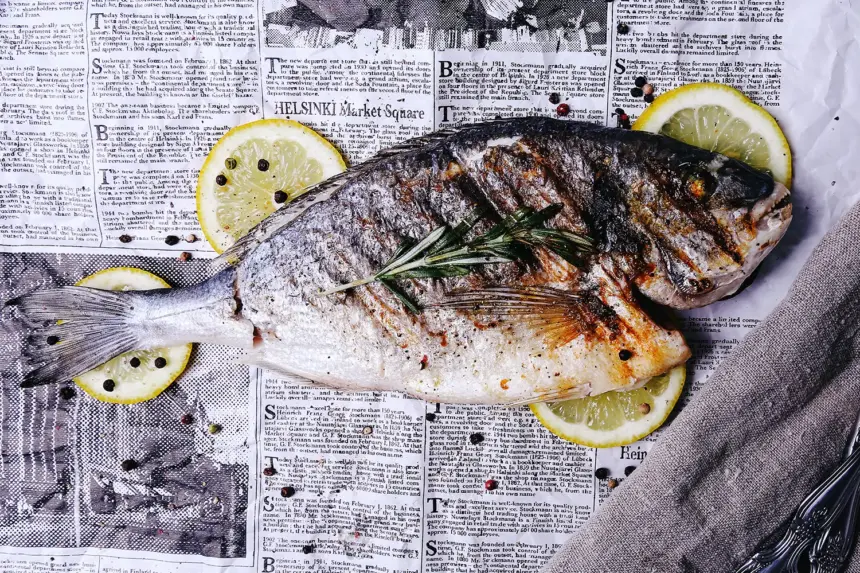Thai Grilled Fish: Pla Pao (ปลาย่าง) – A Delicious Street Food Delight
Thailand is renowned for its diverse and flavorful street food culture, where vendors skillfully prepare dishes that showcase the rich tapestry of Thai cuisine. Among the many popular street foods, Pla Pao, or Thai grilled fish, holds a special place in the hearts of locals and tourists alike. This dish, characterized by its smoky aroma and tender, succulent meat, can be found at food markets, roadside stalls, and beachside vendors across the country. In this article, we will explore the history of Pla Pao, the traditional ingredients, preparation techniques, and the best ways to enjoy this iconic Thai street food.
- Thai Grilled Fish: Pla Pao (ปลาย่าง) – A Delicious Street Food Delight
- The Origins of Pla Pao
- Key Ingredients
- Preparation of Pla Pao
- Step 1: Clean and Prepare the Fish
- Step 2: Stuff the Fish
- Step 3: Coat the Fish with Salt
- Step 4: Grill the Fish
- Step 5: Prepare the Dipping Sauce
- How to Enjoy Pla Pao
- Regional Variations
- Nutritional Benefits of Pla Pao
- Finding Pla Pao in Thailand
- Conclusion
The Origins of Pla Pao
Thai cuisine is deeply influenced by geography, climate, and culture, and Pla Pao is no exception. Grilled fish dishes have been a staple of Thai cuisine for centuries, as Thailand is surrounded by water bodies that provide a plentiful supply of fresh seafood. The abundance of rivers and coastline means that fish has long been a primary source of protein for the Thai people. Over time, Pla Pao became a beloved street food, evolving with various regional twists and adaptations.
The traditional method of preparing Pla Pao involves coating the fish with a layer of salt and grilling it over an open flame. This technique can be traced back to ancient times when salt was used as a preservative. The salt coating not only flavors the fish but also helps to keep it moist and tender during the grilling process.
Key Ingredients
Pla Pao is relatively simple in terms of ingredients, yet the end result is bursting with flavor. The following are the key components that make this dish so unique:
- Whole Fish: Pla Pao is typically made with freshwater fish such as tilapia or sea bass, though any medium-sized fish with firm, white flesh will do. The fish is usually grilled whole, including the head and tail, which enhances the presentation and adds to the overall flavor profile.
- Coarse Salt: The fish is coated in coarse salt before grilling, creating a salty crust that enhances the flavor and keeps the flesh moist. This crust is typically discarded before eating, leaving behind a perfectly seasoned fish that’s tender and juicy.
- Lemongrass and Kaffir Lime Leaves: A crucial aspect of Pla Pao is the aromatic stuffing placed inside the fish cavity. Lemongrass and kaffir lime leaves are commonly used, as their fragrant oils infuse the fish with a distinctively Thai aroma and flavor.
- Dipping Sauce: No Thai dish would be complete without a delicious dipping sauce, and Pla Pao is no exception. The fish is traditionally served with a spicy and tangy sauce made from ingredients like fish sauce, lime juice, garlic, chili, and sometimes a hint of sugar.
Preparation of Pla Pao
The preparation of Pla Pao is relatively straightforward, though it does require some care and attention to achieve the perfect result. Here is a step-by-step guide to making Pla Pao:
Step 1: Clean and Prepare the Fish
Start by cleaning the fish thoroughly, removing any scales and guts. This ensures that the fish will cook evenly and absorb all the flavors from the stuffing. Some vendors leave the scales on, as they provide an extra layer of protection during grilling and contribute to a more rustic presentation.
Step 2: Stuff the Fish
Next, stuff the fish cavity with fresh lemongrass stalks and kaffir lime leaves. These aromatic ingredients will infuse the fish with their distinctive flavors as it cooks. Some variations also include other herbs, such as basil or cilantro, to add additional layers of flavor.
Step 3: Coat the Fish with Salt
Once the fish is stuffed, coat it generously with coarse salt. The salt helps to form a crust around the fish, locking in moisture and enhancing the flavor. Be sure to cover the entire fish, including the head and tail, to ensure even cooking.
Step 4: Grill the Fish
Pla Pao is traditionally cooked over a charcoal grill, which imparts a smoky flavor that complements the natural sweetness of the fish. Place the fish on the grill and cook it for about 20-30 minutes, turning occasionally to ensure even cooking. The salt crust will turn golden brown, and the fish will be cooked to perfection when it flakes easily with a fork.
Step 5: Prepare the Dipping Sauce
While the fish is grilling, prepare the dipping sauce. In a small bowl, combine fish sauce, lime juice, minced garlic, chopped chili, and a touch of sugar. Stir until the sugar is dissolved, and adjust the flavors to taste. The sauce should be tangy, spicy, and slightly sweet, balancing the savory flavors of the grilled fish.
How to Enjoy Pla Pao
Pla Pao is typically served with a side of sticky rice and fresh vegetables, such as cucumbers, lettuce, and herbs. The vegetables provide a refreshing contrast to the rich, smoky flavor of the fish, while the sticky rice helps to balance the heat of the dipping sauce.
To enjoy Pla Pao, simply peel away the salt crust and remove the skin to reveal the tender flesh underneath. Break off a piece of fish, dip it into the sauce, and enjoy it with a bit of rice and vegetables. Each bite is a delightful combination of flavors and textures, showcasing the best of Thai cuisine.
Regional Variations
While the basic preparation of Pla Pao is fairly consistent across Thailand, there are regional variations that reflect the diverse culinary traditions of the country:
- Central Thailand: In central Thailand, Pla Pao is often served with a sweeter dipping sauce, sometimes including crushed peanuts for added texture. This version is popular at night markets and is often paired with papaya salad (som tam) for a full meal.
- Isan (Northeastern Thailand): In the Isan region, Pla Pao is typically served with a spicy dipping sauce that includes fermented fish sauce (pla ra), giving it a more pungent and intense flavor. This variation is often accompanied by fresh herbs, such as Thai basil and mint, which balance the strong flavors of the sauce.
- Southern Thailand: Southern Thailand is known for its bold and spicy flavors, and Pla Pao in this region often includes more chili in the dipping sauce. Coconut milk is sometimes added to the sauce, giving it a creamy texture and a hint of sweetness.
Nutritional Benefits of Pla Pao
Pla Pao is not only delicious but also packed with nutritional benefits. Fish is an excellent source of protein, omega-3 fatty acids, and essential vitamins and minerals, such as vitamin D and selenium. Grilling the fish ensures that it retains most of its nutrients while keeping the calorie count relatively low. The herbs used in Pla Pao, such as lemongrass and kaffir lime leaves, also have health benefits, as they are rich in antioxidants and have anti-inflammatory properties.
Finding Pla Pao in Thailand
If you’re planning a trip to Thailand, Pla Pao is a must-try dish that can be found at markets, street stalls, and beachside vendors across the country. Some of the best places to enjoy Pla Pao include:
- Bangkok: In Bangkok, head to the famous Chatuchak Weekend Market, where you’ll find vendors grilling Pla Pao fresh to order. Other popular spots include the bustling night markets of Khao San Road and Silom.
- Chiang Mai: In Chiang Mai, the Sunday Walking Street Market is a great place to sample Pla Pao along with other northern Thai specialties. The relaxed atmosphere of Chiang Mai makes it an ideal location to enjoy this traditional dish.
- Phuket: For a beachside experience, visit the seafood markets in Phuket, where you can select your own fish and have it grilled on the spot. The fresh sea breeze and stunning views make for a memorable dining experience.
Conclusion
Pla Pao is more than just a grilled fish dish; it’s a quintessential part of Thai street food culture that showcases the country’s love for fresh, flavorful, and wholesome food. From the careful preparation to the vibrant dipping sauce and the variety of regional adaptations, Pla Pao is a dish that captures the essence of Thai cuisine in every bite. Whether you’re a seafood lover or a street food enthusiast, be sure to savor this delectable dish on your next visit to Thailand.
Enjoying Pla Pao is a delicious way to experience authentic Thai flavors while connecting with the country’s rich culinary heritage. Happy eating!













